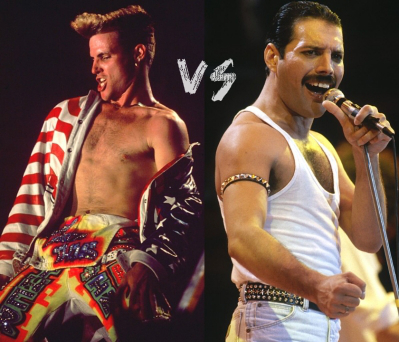You are here
Using Music To Teach Sound Citation
Primary tabs

Dave Hogan/Hulton Archive
During a discussion of proper citation guidelines, I play for my class a collection of rather infamous examples of musical plagiarism, illustrating for the students the nuances of knowing when to attribute to a source and when not.
A set of speakers loud enough for the whole class to hear the examples easily and a device for playing music. Options for the latter include: a CD; a personal iPod; a list of YouTube videos; a Spotify playlist; a flash drive with individual files.
While most students can tell you that plagiarism is wrong, few can tell you what it is. Ask them in class for examples and invariably they will tell you that “submitting someone else’s work as your own” is plagiarism. Instances more nuanced, and so more likely, rarely if ever get attention. Yet certainly college students have been taught the subject before in high school, and so would usually find a lesson on intellectual property theft dry, boring and repetitive. By presenting my students with new, engaging examples from a medium — popular music — from their daily lives, some of the more troublesome and subtle patterns can be addressed without sacrificing their attention.
The pieces I have used in class are organized to indicate varying levels of artistic culpability, intent and innocence regarding artistic theft; I begin with the most clear cut cuts — songs that lost a plagiarism lawsuit — then move into less obvious territory. The songs most helpful to my students, with relevant links and the concepts they mean to exemplify, are as follows:
• Queen & David Bowie, “Under Pressure” vs. Vanilla Ice, “Ice Ice Baby”
My first example highlights explicit, premeditated, egregious plagiarism. While sampling was (and remains) a common practice in hip-hop, what makes Vanilla Ice stand out from, say, MC Hammer’s use of Rick James, is how Ice failed (and even denied) crediting Queen/Bowie. (This clip really drives the point home: http://youtu.be/1s0hEi8zhmg?t=1m40s)
• George Harrison, “My Sweet Lord” vs. The Chiffons, “He’s So Fine”
In contrast to the previous pair, this example spotlights — in the words of the infamous court case — “subconscious plagiarism”; namely, how Harrison (an artist at the peak of his career) accidentally copied a much older song. While most students likely will not blatantly steal from another author, this reference shows that intent or even awareness does not always matter.
• Willie Dixon, “Hoochie Coochie Man” (performed by Muddy Waters) vs. Bo Diddley, “I’m A Man”
This case, on the other hand, calls attention to what I call “conventional knowledge”: elements of a genre that are so widespread and frequent that any attribution would be distracting and ridiculous. In terms of the blues, that would involve a riff like both Diddley and Dixon use; within US political discourse, it would be “conventional knowledge” that Republicans are conservative, needing no extra citation.
• Marvin Gaye, “Got To Give It Up (Part 1)” vs. Robin Thicke, “Blurred Lines”
Probably the illustration that gets the most engaged reaction from students, these songs, much like the previous example, show how pathos and logos (the dance-party feeling and the instrumentation, respectively) can be shared while the individuality remains intact.
• The Rolling Stones, “Lady Jane” vs. Neil Young, “Borrowed Tune”
What might have been the most flagrant case of theft is here spared of any charge of plagiarism not only because Young gave songwriting credit to Jagger/Richards, but because within the lyrics themselves, Young acknowledges that he is “singing a borrowed tune / [he] stole from the Rolling Stones.” If timed well, students can get a real kick out of this example.
Formulate a list of examples, noting specifically what sections of each track you want to play. For instance, you may only want to play the second and third verses of Neil Young’s “Borrowed Tune” (as mentioned above), in which case you’ll want to start the track around the 1:20 mark. A certain familiarity with music theory, in order to communicate exactly how the pieces are similar, might also be helpful for some instructors. Furthermore, knowing the history behind whatever examples you choose — such as whether or not a lawsuit was brought against an artist, and if so, who won — is highly illustrative; asking students whether or not they think George Harrison, for instance, lost his case also improves engagement.
As with any class that primarily involves media examples, students should pay close attention to the music, taking note of whatever objective elements they hear. These could include: genre, instruments, speed, lyrics, time or key signature, etc. All of these elements play into what makes a record unique or derivative.
As an in-class group assignment, I graded my students on participation.
Typically, students enjoy breaks from the routine of reading, and can become very engaged when the material under observation is something that is a part of their daily life, like pop music is. Generally speaking, they are often surprised by the outcomes of certain cases (like the George Harrison or Robin Thicke instances above), which broadens their understanding of exactly what counts as theft and what may not. As it is, few of my students who have participated in this lesson have had any issue with properly citing their sources.
-

- Log in to post comments

